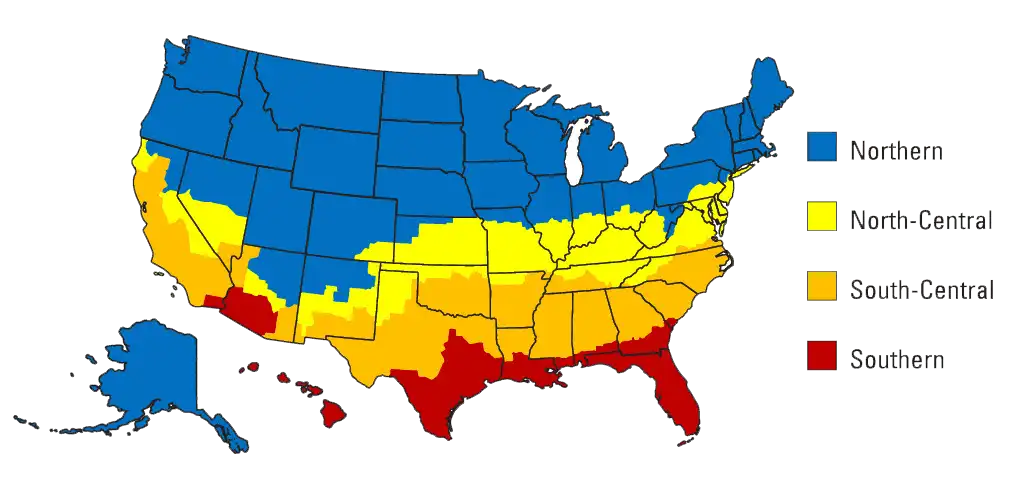
12 November 2024
What are ENERGY STAR® Windows?
The ENERGY STAR sticker has become synonymous with energy savings. Replacing old windows with ENERGY STAR-certified windows can lower household energy bills. It can lower bills an average of 13%, according to ENERGY STAR.* It’s easy to see why people want to add ENERGY STAR windows to their home. But what makes windows ENERGY STAR-certified and energy efficient?
What Makes Windows ENERGY STAR-Certified?
ENERGY STAR-certified windows must meet a set of criteria to earn the familiar sticker. ENERGY STAR certification uses U-factor and Solar Heat Gain Coefficient (SHGC) ratings. ENERGY STAR-certified windows are:
Manufactured by an ENERGY STAR partner
Independently tested, certified, and verified
National Fenestration Rating Council (NFRC) ratings meet U.S. Environmental Protection Agency energy efficiency guidelines
How to Read a Window Label?
Windows use an NFRC label for NFRC-certified energy performance. When the window label also has an ENERGY STAR logo, it indicates the product is ENERGY STAR certified. Knowing how to read a window label can inform you about a window’s energy performance ratings. The NFRC label includes information on U-factor, Solar Heat Gain Coefficient (SHGC), and Visible Transmittance.
U-factor is a measure of heat loss and how much heat inside your home is escaping outside. The lower the number, the less heat that escapes.
SHGC measures heat gain from the sun entering your home. The lower the number, the less heat that enters your home. Lower SHGC can reduce cooling costs while higher SHGC can reduce heating costs.
Visible Transmittance measures how much natural light enters your home. The higher the number, the more light that passes through. Higher Visible Transmittance can reduce reliance on artificial light to illuminate a room.
Air Leakage refers to how much air will enter a room through a product. A lower number means fewer leaks. It's an optional listing on a NFRC window label.
Ratings Vary by Climate Zone
ENERGY STAR uses four climate zones: Northern, North Central, South Central, and Southern. It has established U-factor ratings and SHGC figures for each climate zone. Those ratings help people find windows that make the most sense for their climate.

What Makes Windows Energy Efficient?
Energy efficient windows are those with quality frame materials. They also have multiple panes, low-E glass, a gas fill, and warm-edge spacers.
Quality frame materials: Quality frame materials as durable and low-maintenance. The material also reduces heat transfer and help insulate better.
Multiple panes: Windows that have at least two panes of glass with an air or gas-filled space between the panes. Marvin Replacement windows feature two panes of glass with an argon gas fill for energy efficiency.
Low-E glass: Low emissivity (Low-E) glass has special transparent metallic coatings. The coatings reflect heat out of a home in summer. The coatings also help keep heat inside during winter. Low-E glass also reduces the amount of UV light into a room. UV rays can lead to color fading of furniture and other items.
Gas fills: Double pane windows contain an inert gas fill, like krypton or argon. Those gasses can provide better insulation than air. Marvin Replacement windows use an argon gas fill.
Spacers: Double pane windows have spacers to hold the glass panes the correct distance apart. Spacers can help insulate pane edges and reduce heat transfer. Marvin Replacement windows come standard as double pane windows with spacers.
Where Can You Find ENERGY STAR Windows?
ENERGY STAR has a helpful ENERGY STAR window finder tool. Marvin Replacement design consultants can help you select ENERGY STAR-certified windows for your climate.
FAQs
Why does ENERGY STAR matter?
ENERGY STAR matters because the program attempts to reduce home energy usage. Lower energy usage can result in utility savings. ENERGY STAR-certified products have greater energy efficiency than those that aren’t. The program has helped save more than $500 billion in energy costs since 1992, according to ENERGY STAR.
*Source 2023: D+R International in support of ENERGY STAR. Savings estimates are based on EnergyPlus 9.5 modeling for typical homes in 132 U.S. cities. Ranges are based on the average savings among homes in modeled cities. Actual savings will vary based on local climate conditions, utility rates, and individual home characteristics.
Back to All Articles
You May Also Like

Best Windows for Your Home
Finding the best windows for your home depends on your window material preference, energy efficiency, window style, and budget.
Best Windows For Your Home
When to Replace Your Windows
Determining when it’s time to replace your windows can depend on the specific issue you’re facing. If you’re experiencing a broken window or damaged frame, you’ll likely want to take immediate action—but if you’re looking to refresh your home you might take a little more time to decide.
Learn More About Energy Efficiency
Ways to Reduce Energy Loss with Windows
The U.S. Department of Energy estimates that 30% of a home’s heating energy is lost through windows while 76% of sunlight that falls on standard, double pane windows turns into heat during the summer.
Ways you can save